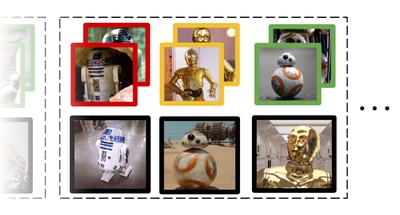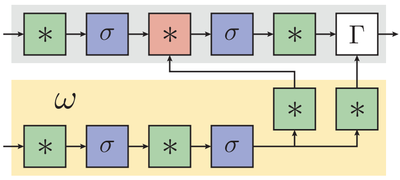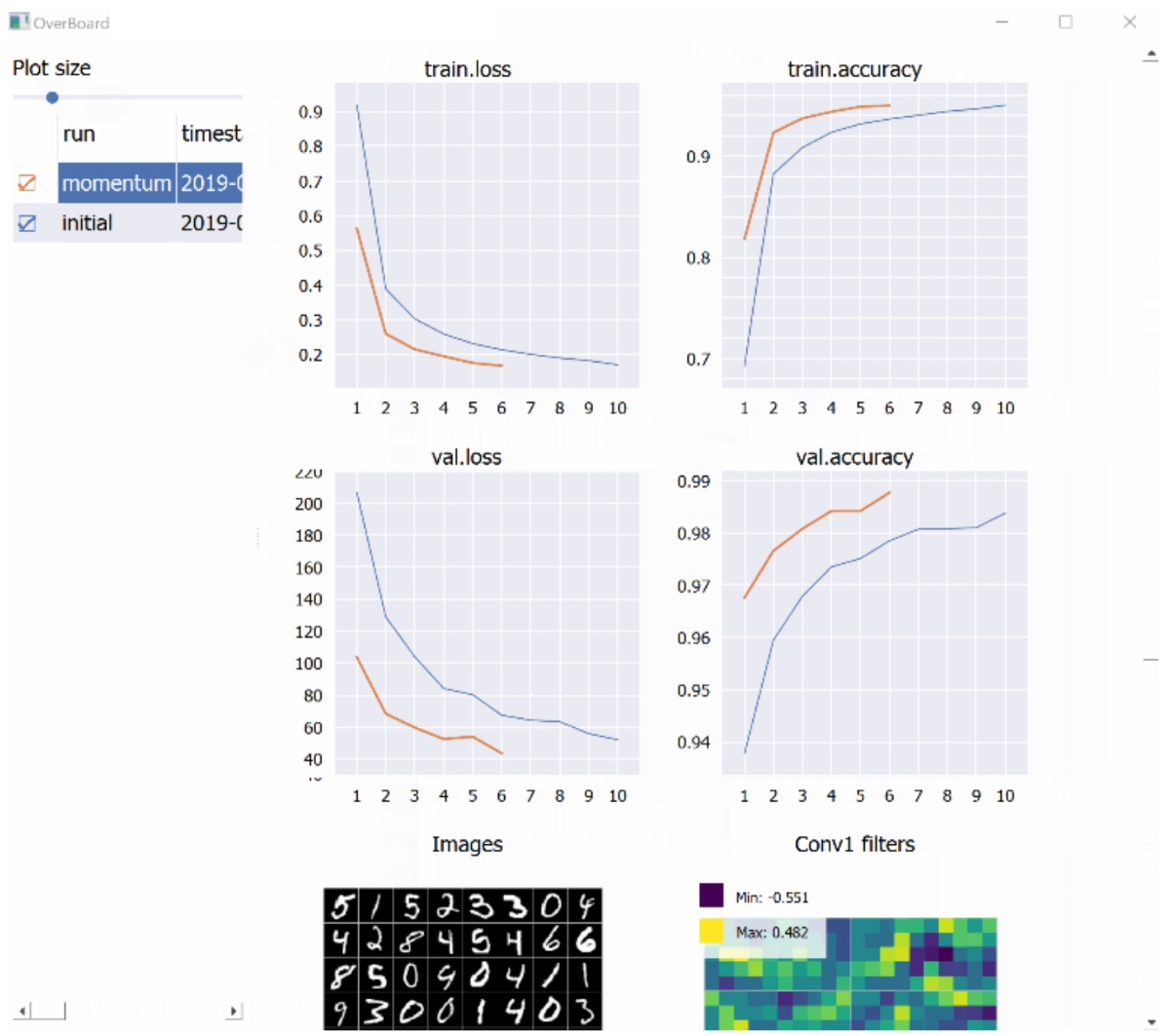pip install overboard

Hi, my name is João F. Henriques. (Sounds a bit like “joo-au” in English.) I like to work in the convex hull of machine learning, deep learning and computer vision. Perhaps my most well-known works are on visual tracking, but I have many favourite topics: friendly AI, robot mapping, meta-learning, continual learning, self-supervised learning and optimisation.
My talented DPhil students:
Marian Longa · Shu Ishida · Andreea Oncescu · Tim Franzmeyer · Dominik Kloepfer · Yash Bhalgat · Shivani Mall · Lorenza Prospero · Daniil Zverev
(Graduated: Xu Ji · Mandela Patrick)
Research
Publications, talks and source-code
Filter by topic
Extracting Reward Functions from Diffusion Models
F. Nuti, T. Franzmeyer, J. F. Henriques
arXiv, 2023
PDF arXivContrastive Lift: 3D Object Instance Segmentation by Slow-Fast Contrastive Fusion
Y. Bhalgat, I. Laina, J. F. Henriques, A. Zisserman, A. Vedaldi
arXiv, 2023
PDF arXivD. Kloepfer, D. Campbell, J. F. Henriques
ICCV, 2023
PDF AppendixN. Nayal, M. Yavuz, J. F. Henriques, F. Güney
ICCV, 2023
PDF Appendix arXivY. Xia, M. Gladkova, R. Wang, Q. Li, U. Stilla, J. F. Henriques, D. Cremers
ICCV, 2023
PDF Appendix arXivY. Bhalgat, J. F. Henriques, A. Zisserman
CVPR, 2023
PDF arXivC. Oncescu, J. Valmadre, J. F. Henriques
Tiny Papers at ICLR, 2023
PDFT. Franzmeyer, P. Torr, J. F. Henriques
Advances in Neural Information Processing Systems, 2022
PDF arXiv
E. Insafutdinov, D. Campbell, J. F. Henriques, A. Vedaldi
ECCV, 2022
We augment neural radiance fields to render views of partially-symmetric objects that are not seen in the data, such as when seeing a car from just one side. Since shadows and reflections break object symmetry, in the process we decompose scenes into geometry, light and material properties.
PDF arXiv
T. Franzmeyer, M. Malinowski, J. F. Henriques
ICLR, 2022
How can autonomous agents help others, including humans, without having exact knowledge of their goals? We explore the concept of increasing others' choice so that they can more easily pursue arbitrary goals, which in some cases even outperforms explicitly cooperative rewards.
PDF arXivAudio retrieval with natural language queries: A benchmark study
A. S. Koepke, A. Oncescu, J. Henriques, Z. Akata, S. Albanie
IEEE Transactions on Multimedia, 2022
Illusionary Attacks on Sequential Decision Makers and Countermeasures
T. Franzmeyer, J. F. Henriques, J. N. Foerster, P. H. Torr, A. Bibi, C. S. de Witt
arXiv, 2022
PDF arXivM. Patrick, D. Campbell, Y. M. Asano, I. M. F. Metze, C. Feichtenhofer, A. Vedaldi, J. F. Henriques
NeurIPS, 2021 (oral presentation)
We improve video transformers (e.g. for action recognition) by encouraging attention pooling over motion paths. We also reduce the quadratic computational complexity of attention to linear, with a rigorous probabilistic approximation based on orthogonal prototypes.
PDF arXiv
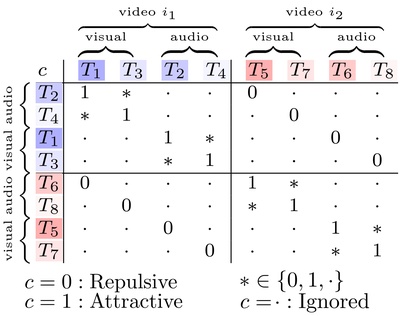
M. Patrick, Y. M. Asano, P. Kuznetsova, R. Fong, J. F. Henriques, G. Zweig, A. Vedaldi
ICCV, 2021
Most contrastive self-supervised methods learn representations that are distinctive to individual examples, and invariant to several other factors. We propose a framework to systematically evaluate valid combinations of distinctive and invariant factors, yielding superior performance in many multi-modal learning tasks.
PDF Code arXivM. Patrick, Y. M. Asano, P. Huang, I. Misra, F. Metze, J. F. Henriques, A. Vedaldi
ICCV, 2021
PDF Code arXivJ. Jiao, J. F. Henriques
BMVC, 2021
PDFD. Xu, A. Vedaldi, J. F. Henriques
IROS, 2021
A self-supervised network that learns to decompose a video into camera motion, depths, object segmentation, and object motion in 6D (translation and rotation). We do this by assuming a locally-rigid world model in every patch of the video.
PDF arXiv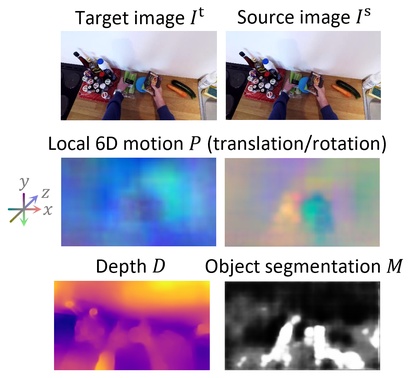

M. Patrick, P. Huang, Y. Asano, F. Metze, A. G. Hauptmann, J. F. Henriques, A. Vedaldi
ICLR, 2021
We investigate noise-contrastive learning of video-text neural networks. We find that learning to reconstruct video captions with video retrieval as a representational bottleneck yields better semantic representations.
PDF arXivA. Oncescu, A. S. Koepke, J. F. Henriques, Z. Akata, S. Albanie
Interspeech, 2021 (nominated for best student paper award)
Creating a content-based audio search engine. Similar to Google Images, but for audio instead.
PDF arXivA. Oncescu, J. F. Henriques, Y. Liu, A. Zisserman, S. Albanie
ICASSP, 2021
A dataset with more than 70 hours of detailed spoken narrations for 200 hours of varied YouTube videos, from more than 1400 volunteer narrators. Text transcriptions are also included. Based on YouDescribe, the goal is to narrate as many videos as possible for the visually impaired, and to facilitate automatic narrations.
PDF Project page with dataset arXiv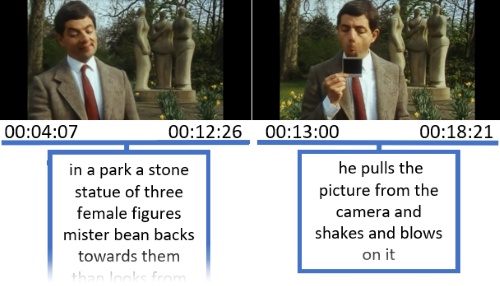
X. Ji, J. Henriques, T. Tuytelaars, A. Vedaldi
NeurIPS Workshops, 2020
Avoiding catastrophic forgetting with context-sensitive generative recall, inspired by biological memory.
PDF arXivB. Davidson, M. S. Alvi, J. F. Henriques
ECCV, 2020
PDFP. Martins, J. F. Henriques, J. Batista
IJCV, 2020
PDFJ. F. Henriques, S. Ehrhardt, S. Albanie, A. Vedaldi
ICCV, 2019
We propose CurveBall, a fast second-order optimizer for deep networks that is simple to implement and does not require hyper-parameter tuning.
PDF Optimisers visualisation (GIF) PyTorch code TensorFlow code Matlab code Slides Appendix arXiv
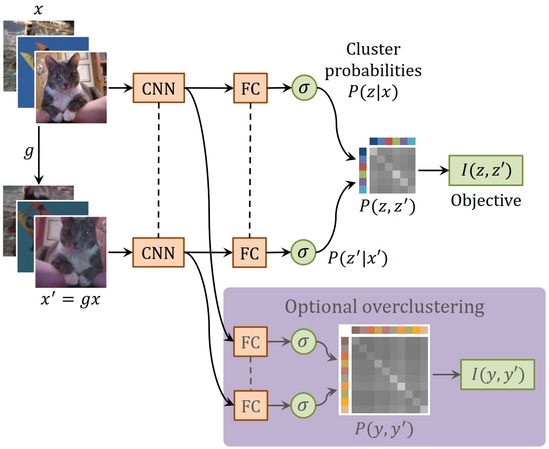
X. Ji, J. F. Henriques, A. Vedaldi
ICCV, 2019
A simple-to-implement mutual information objective that trains deep networks to perform clustering from scratch, with no labels and only one hyper-parameter. Experiments include self-supervised clustering and image segmentation.
PDF PyTorch code arXiv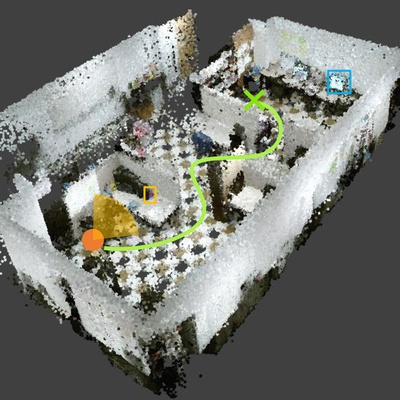
J. F. Henriques, A. Vedaldi
CVPR, 2018 (oral presentation)
SLAM (Simultaneous Localization And Mapping) is crucial for robotics, but traditional systems cannot improve by learning from data. We propose MapNet, an end-to-end learnable deep network that solves the full SLAM problem, by leveraging efficient operations on a spatial memory.
PDF Blog post Results video (real data) Results video (Doom game) PyTorch code Talk SlidesJ. Valmadre, L. Bertinetto, J. F. Henriques, R. Tao, A. Vedaldi, A. W. Smeulders, P. H. Torr, E. Gavves
ECCV, 2018
A tracking benchmark with over 14 hours of video, focusing on diverse footage captured "in the wild" and long-term performance.
PDF Project page with dataset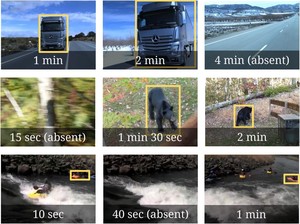

J. F. Henriques, A. Vedaldi
ICML, 2017 (oral presentation)
Convolutions match patterns across translations. We generalize convolutions (and thus CNNs) to work across scaling, rotation and more, including 3D rotations. We show how this generalization can be done with negligible overhead, by performing a single fixed warp before a standard convolution.
PDF Slides (visual explanation) arXiv (proofs variant using simple calculus)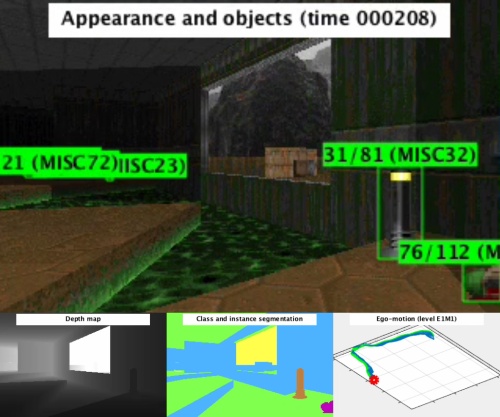
A. Mahendran, H. Bilen, J. F. Henriques, A. Vedaldi
arXiv, 2017
A large dataset in the COCO format with object class/instance bounding boxes and segmentation masks, as well as depth and egomotion, extracted from speedruns of the videogame Doom.
PDF Dataset Code arXivJ. F. Henriques
PhD thesis, 2016
My thesis, contains a tutorial introduction to circulant matrices and Fourier methods for machine learning.
PDF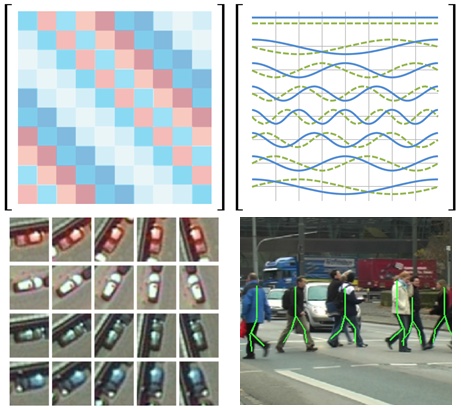
P. Martins, J. F. Henriques, R. Caseiro, J. Batista
TPAMI, 2016
PDF Video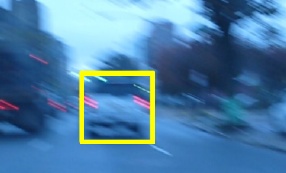
L. Bertinetto, J. Valmadre, J. F. Henriques, A. Vedaldi, P. H. S. Torr
ECCV Workshops, 2016
The SiamFC tracker, one of the fastest visual trackers based on deep networks. This basic architecture has been used in numerous follow-up works, and commercially-deployed systems.
PDF Project page Code Short talk arXivJ. F. Henriques, R. Caseiro, P. Martins, J. Batista
TPAMI, 2015
The KCF, an extremely fast visual tracker (hundreds of frames-per-second), especially suited for resource-constrained devices. It relies on the Fast Fourier Transform, with online learning based on the theory of circulant matrices.
PDF Matlab code C++ code (official OpenCV class, single-scale) C++ code (multi-scale) C++ code (streamlined) arXiv
R. Caseiro, P. Martins, J. F. Henriques, J. Batista
CVPR, 2015
PDF
J. F. Henriques, P. Martins, R. Caseiro, J. Batista
NeurIPS, 2014
PDF Appendix A Appendix B (with code)P. Martins, R. Caseiro, J. F. Henriques, J. Batista
ICIP, 2014 (top 10% of accepted papers)
PDF Video arXivR. Caseiro, P. Martins, J. F. Henriques, J. Carreira, J. Batista
CVPR, 2013 (oral presentation)
PDFJ. F. Henriques, R. Caseiro, P. Martins, J. Batista
ECCV, 2012
The first tracker based on circulant matrices. A more recent version is the KCF.
PDF Video Matlab code Python code Java code Appendix B Appendix C PosterR. Caseiro, J. F. Henriques, P. Martins, J. Batista
ECCV, 2012
PDFP. Martins, R. Caseiro, J. F. Henriques, J. Batista
ECCV, 2012
PDF VideoP. Martins, R. Caseiro, J. F. Henriques, J. Batista
BMVC, 2012 (oral presentation)
PDF VideoR. Caseiro, P. Martins, J. F. Henriques, J. Batista
Pattern Recognition, 2012
PDFJ. F. Henriques, R. Caseiro, J. Batista
ICCV, 2011 (oral presentation)
PDF Results video Talk (part 1) Talk (part 2) Slides
R. Caseiro, J. F. Henriques, P. Martins, J. Batista
ICCV, 2011
PDFJ. F. Henriques, R. Caseiro, J. Batista
ICIP, 2010
PDFR. Caseiro, J. F. Henriques, J. Batista
ICIP, 2010
PDFMore
Research-related
Workshops on Preregistration
An alternative publication model for machine learning research
Preregistration separates the generation and confirmation of hypotheses:
There are several advantages in this model: 1) A healthy mix of positive and negative results; 2) Reasonable ideas that don’t work still get published, avoiding wasteful replications; 3) Papers are evaluated on the basis of scientific interest, not whether they achieve the best results; 4) It is easier to plan research; and 5) results are statistically stronger. Check the pages below for more information, including talks and preregistered machine learning papers.
OverBoard
A pure Python dashboard for monitoring deep learning experiments
OverBoard is a lightweight yet powerful dashboard to monitor your experiments. It includes:
conda install pyqt pyqtgraph -c anaconda) and Python 3.
Fun
Not mutually-exclusive with research
S. Albanie, L. Momeni, J. F. Henriques
SIGBOVIK, 2023
Our research team jumps on the LLM bandwagon, scoops in hand. This article was 100% produced by free-range humans.
PDF arXivS. Albanie, D. Campbell, J. F. Henriques
SIGBOVIK, 2022
A deep dive into the murky waters of AI future prediction and the legalities of scaling laws.
PDF arXivS. Albanie, E. Lu, J. F. Henriques
SIGBOVIK, 2021
Inspired by the squishy sciences, we embark on a perilous journey to explain today's Cambrian explosion in self-supervised methods.
PDF arXivS. Albanie, J. Thewmore, R. McCraith, J. F. Henriques
SIGBOVIK, 2020
A way to fast-forward through arXiv submissions, and the artistic value of taping edible objects to a wall (gallery included).
PDF arXivS. Albanie, J. Thewlis, S. Ehrhardt, J. F. Henriques
Narrowly missed SIGBOVIK, 2019
The most end-to-end network ever proposed, and a sunnier alternative to cloud computing. Narrowly missing the deadline for SIGBOVIK 2019, received the Most timely paper
award at SIGBOVIK 2020.
S. Albanie, J. Thewlis, J. F. Henriques
SIGBOVIK, 2018
Includes a discussion of ruthless edu-tech business tactics, and baking cherry cakes with a fellow whose name rhymes with quelqu'un.
PDF arXiv Code SIGBOVIK ReviewsS. Albanie, S. Ehrhardt, J. F. Henriques
SIGBOVIK, 2017
An attempt to end the madness of pitting network-against-network (GAN training). This paper achieved moderate success on social media, which meant that all subsequent papers were doomed to obscurity (but that didn't stop us).
Surprisingly, there is an entirely serious paper that experiments with generative unadversarial training
and credits our joke paper as the inspiration! (With full knowledge that it is not to be taken seriously of course.) Mission accomplished.
